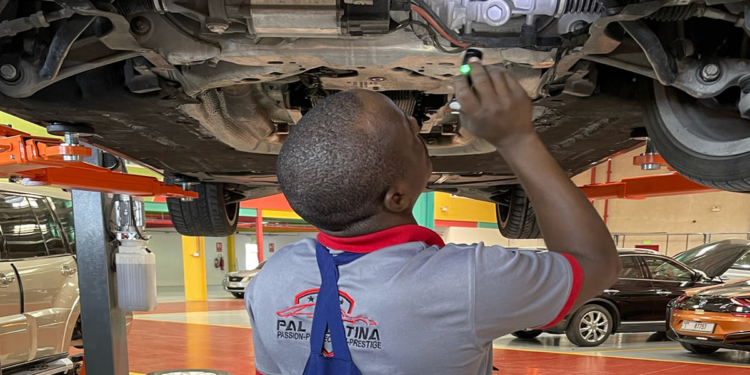How to maintain and repair your vehicle
Maintaining your car with regular inspections and small DIY repairs can prevent expensive fixes down the line.

Maintaining and repairing your vehicle is essential for its longevity, performance, and safety. Here’s a practical guide to keeping your car in top shape:
1. Regular Oil Changes
- Why: Oil lubricates engine parts and prevents overheating. Over time, oil breaks down and becomes less effective, which can lead to engine damage.
- How: Check your owner’s manual for the recommended oil change interval. Generally, it’s every 5,000 to 7,500 miles for newer cars.
- DIY or Professional: You can change the oil yourself or take it to a mechanic. Be sure to use the right oil grade for your car.
2. Check and Top Off Fluids
- Coolant: Prevents your engine from overheating. Check the level regularly and add coolant as needed.
- Brake Fluid: Vital for proper braking. Check levels every few months and look for any signs of contamination.
- Transmission Fluid: Ensures smooth shifting. Check it according to your car’s manual and refill as necessary.
- Windshield Washer Fluid: Essential for visibility, especially in adverse weather. Refill as needed.
3. Monitor Tire Health
- Tire Pressure: Keep your tires inflated to the recommended pressure (usually found on the driver’s door or in the manual). Check it monthly or before long trips.
- Tire Rotation: Rotate tires every 5,000 to 8,000 miles to ensure even wear.
- Wheel Alignment: Misaligned wheels can cause uneven tire wear and handling issues. Have your alignment checked annually or if you notice the vehicle pulling to one side.
- Tread Depth: Tires should have a tread depth of at least 2/32 of an inch. Consider replacing tires when they get below 4/32 of an inch for safer handling.
4. Replace the Air Filter
- Why: A clogged air filter reduces fuel efficiency and may lead to engine damage over time.
- How: The air filter is usually easy to replace on most cars. Check it every 15,000 to 30,000 miles, or more frequently if you drive in dusty conditions.
5. Check the Battery
- Inspection: Look for corrosion around the battery terminals and clean it off with a mix of baking soda and water if needed.
- Testing: Have the battery tested every 6 months or if you notice starting issues. Replace it every 3-5 years or when it shows signs of wear.
- Tip: Keep your battery connections tight to ensure a reliable power source.
6. Replace Wiper Blades
- Why: Worn wiper blades reduce visibility in bad weather. Replace them every 6-12 months or if you notice streaking.
- How: Replacement is usually straightforward and doesn’t require tools.
7. Inspect Belts and Hoses
- Belts: Look for cracks, fraying, or wear on the serpentine and timing belts. These should be inspected annually and replaced according to the manual (usually around 60,000–100,000 miles).
- Hoses: Check for leaks, cracks, or bulges. Hoses should be replaced if you see any signs of wear.
8. Keep Brakes in Good Condition
- Inspection: Check brake pads, rotors, and brake fluid. If you hear squeaking, grinding, or feel vibrations when braking, it’s time for a brake check.
- Replacement: Brake pads typically last between 30,000 and 70,000 miles, depending on driving conditions.
9. Maintain Exterior and Interior Cleanliness
- Wash Regularly: Washing removes dirt, salt, and debris that can lead to rust and paint damage. Aim to wash your car every two weeks, especially in winter or if you live in a salty or polluted area.
- Wax Every 6 Months: Waxing protects the paint and keeps your car looking new.
- Clean Interior: Vacuuming and cleaning upholstery and dashboard keeps the interior in good shape and helps retain your car’s value.
10. Follow Routine Maintenance in the Owner’s Manual
- Scheduled Services: Most vehicles require maintenance at specific intervals (e.g., 30,000, 60,000, and 90,000 miles). Following the manufacturer’s recommended service schedule will prevent major repairs.
- Replace Spark Plugs: Spark plugs usually need replacement every 30,000 to 100,000 miles. Worn spark plugs can affect fuel economy and cause misfiring.
11. Listen for Unusual Sounds and Watch for Warning Lights
- Dashboard Lights: Pay attention to warning lights, such as the check engine light, and address any issues promptly to prevent larger problems.
- Unusual Noises: Grinding, squealing, or knocking sounds may signal problems with the brakes, engine, or suspension. Address these immediately.
12. Do Basic Repairs When Possible
- Headlight and Taillight Bulbs: Burnt-out bulbs are usually easy to replace. Keeping your lights working is essential for safety and helps you avoid tickets.
- Battery Replacement: Replacing a car battery is often straightforward and can save you from being stranded.
13. Check for Recalls
- Why: Recalls often cover safety issues or manufacturing defects, and repairs are typically covered by the manufacturer.
- How: Check for recalls on the NHTSA website (nhtsa.gov) or register your car with the manufacturer for recall notifications.
Final Tips
Maintaining your car with regular inspections and small DIY repairs can prevent expensive fixes down the line. Keeping records of all maintenance and repairs will help if you sell your car and can be useful when discussing issues with a mechanic. Regular maintenance keeps your car reliable, improves resale value, and ensures you’re driving safely.
Do you have an advertisement or article you want to publish? Mail us at theugreports@gmail.com or WhatsApp +256394700683.






